ARDECHE
Plants and Animals
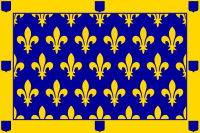
Plants and Animals
Popular destinations FRANCE
| Alsace | Ardeche | Auvergne |
| Brittany | Burgundy | Cevennes |
| Corsica | Cote d'azur | Dordogne |
| Jura | Languedoc-roussillon | Loire valley |
| Lot | Normandy | Picardy |
| Provence |
Plants and Animals
Plants
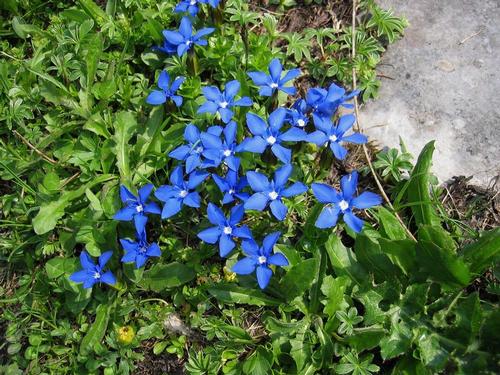 Gentians ArdechePhoto: Tigerente CC 3.0 Unported no changes made
Gentians ArdechePhoto: Tigerente CC 3.0 Unported no changes made
There is a clear difference between the flora of the north and the south of the Ardèche. In the north, alpine and even arctic species can be found from the last Ice Age in this region. In the south, many Mediterranean species such as thyme, savory, juniper bush, prickly gorse, olive tree, lavender, alpine pine, evergreen species such as holm oak and kermese oak and deciduous species such as pedunculate oak and downy oak.
The warmest parts of the gorges are overgrown with holm oak, kermesik, sarsaprilla shrub, rock rose, mouse thorn, sanddod grass, white smele, turpentine, wild asparagus, thyme, savory, Southern European juniper and lavender. Where it is not so warm, downy oak, truffle oak, pedunculate oak, juniper bush and honeysuckle grow. Because many flowers are picked, irises, peonies, cyclamen, periwinkle palms, jasmine, many types of orchids and gladioli are becoming less and less common.
In the Montagne Ardèchoise, on the slopes of mountains like the Mont Mézenc and Mont Gerbier-de-Jonc, the silver-colored spring ragwort, also known as the 'grass of Mézenc', stands out. You will also find mountain violets, daffodils, gentians, anemones, alpine roses, lady's mantle, bearberry and the rare carnivorous sundew. Endemic to the mountainous region of the Mézenc is the rock plant Senecio leucophyllus. The most common tree species on and around the massif of Mont Mézenc is Norway spruce. To get a little more variety and natural balance in the tree population, hardwoods such as beech and maples, and coniferous species such as larch and Douglas fir were planted.
The scrubland areas, which mainly consist of grasses and low plants, are covered with boxwood, prickly juniper, woolly rockrose, mastic, clematis, honeysuckle, scorpion broom, Virginia creeper, a stray honey locust and the sweet pea with its beautiful flowers.
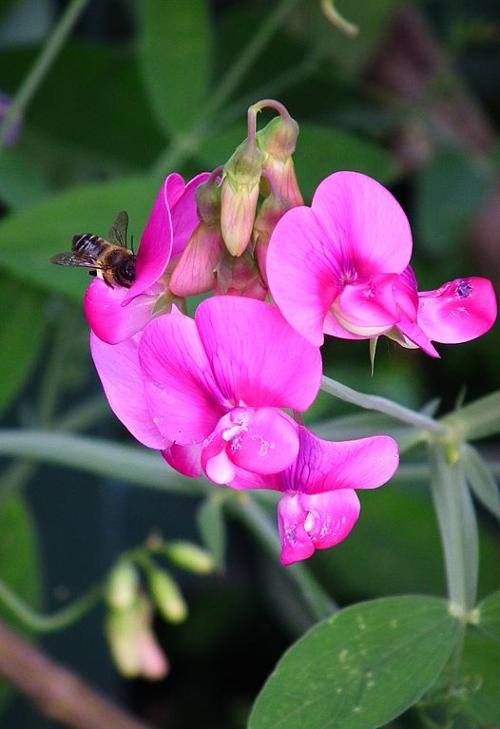 The pea grows in the garrigue areas of ArdèchePhoto: 4028mdk09 CC 3.0 Unported no changes made
The pea grows in the garrigue areas of ArdèchePhoto: 4028mdk09 CC 3.0 Unported no changes made
On the high plains and in the mountains it is a succession of forests, plains and meadows, each with its own flora. A random list shows the diversity well: broom, sundew, mountain violet, euforbia, narcissus, peat fluff, spring ragwort, foxglove, yellow gentian, great gentian, alpine anemone, alpine rose, yarrow, arnica, wild rose, fireweed, saxifrage, trollyrus, red saxifrage, trollyrus, Solomon Seal, Wool Grass, Yarrow, Mallow, Arnica and St. John's Wort.
Animals
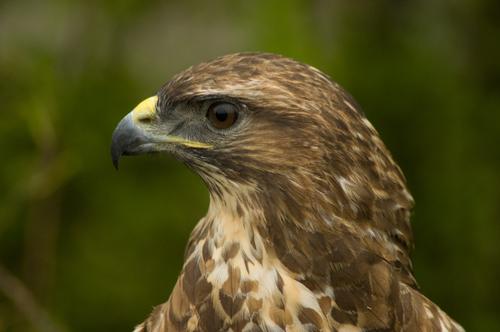 Buzzard ArdechePhoto: Spencer Wright CC 2.0 Generic no changes made
Buzzard ArdechePhoto: Spencer Wright CC 2.0 Generic no changes made
The Réserve naturelle des Gorges de l'Ardèche is a typical bird of prey area, with about sixteen species, both brothers and migrants. The hawk eagle, the serpent eagle, the buzzard and the bearded vulture can be seen here to a greater or lesser extent. A selection of the other bird species: wryneck, jay, green woodpecker, shrike, wagtail and rock swallow. Large mammals include beavers, genets, feral goats and wild boars.
The rivers and lakes of the Ardèche are home to about 30 species of fish, including European grayling, carp, pike, zander, barbel , goby, roach, rudd, dace, tench, gudgeon, bullhead, bream, alvert, ellerling, catfish, chub and the very rare lake trout. Migrating species include eel, shad and lamprey species.
In 1985 marmots were released again in the massif of Mont Mézenc.
In addition to many migratory birds, there is also a migratory butterfly that crosses the Rhône valley in the spring towards the far north of Europe.
In 2000, gold trout (also known as knight trout or red trout) was released in the crater lake Lac d'Issarlès.
Europe's largest lizard, the up to 70 cm long pearl lizard (photo), has a great time in the sun-drenched Ardèche, as is the great enemy of lizards, the lizard snake. This smooth snake species up to two meters long is poisonous, but not dangerous to humans and also very shy.
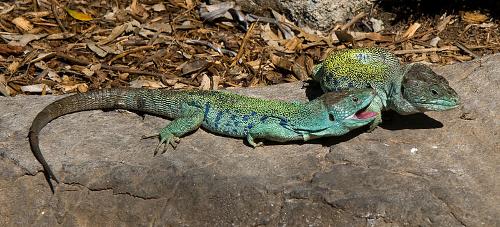 Pearl lizard, largest lizard species in the ArdèchePhoto: Jason Pratt CC 2.0 Generic no changes made
Pearl lizard, largest lizard species in the ArdèchePhoto: Jason Pratt CC 2.0 Generic no changes made
Despite shrinking populations, the Ardèche still has seventeen bat species, including the Eyelash or Netted Bat, Capaccini's Bat, Fringed Tail, Pug or Cross-eared Bat, European Free-tailed Bat, Bechstein's Bat, Common Bat, small-eared bat, gray long-eared bat, common pipistrelle, long-winged or Schreiber's bat, long-eared bat, water bat (photo) and the purple horseshoe bat.
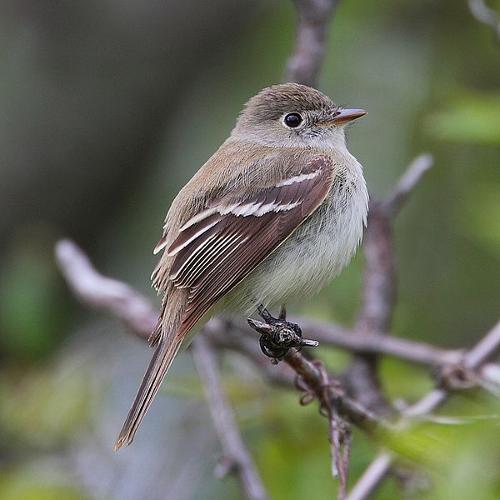 Small flycatcher, bird from ArdèchePhoto: Mdf CC 3.0 Unported no changes made
Small flycatcher, bird from ArdèchePhoto: Mdf CC 3.0 Unported no changes made
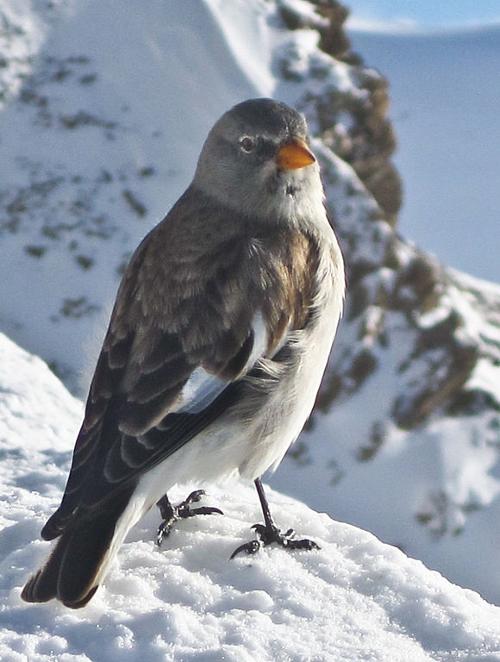 Snow finch, bird in ArdechePhoto: Doc Searls CC 2.0 Generic no changes made
Snow finch, bird in ArdechePhoto: Doc Searls CC 2.0 Generic no changes made
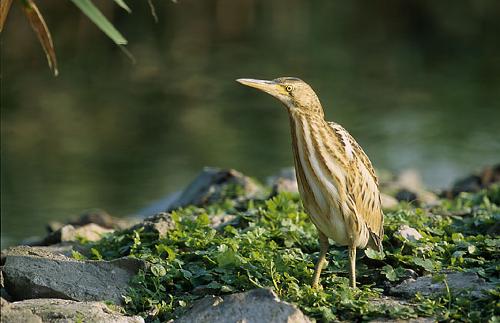 Little bittern, a species of heron in the ArdèchePhoto: Marek Szczepanek CC 3.0 Unported no changes made
Little bittern, a species of heron in the ArdèchePhoto: Marek Szczepanek CC 3.0 Unported no changes made
Sources
Ardèche
Lannoo
Ardèche
Touring/Lannoo
Ardèche, Drôme
Terra Lannoo
BBC - Country Profiles
CIA - World Factbook
Forst, Bettina
Cevennen, Ardèche
Graaf, Gjelt de / Auvergne, Ardèche
ANWB
Kalmbach, Gabriele
Ardèche
Talbot, Roseline
Natuurreisgids Ardèche en Auvergne
Wikipedia
Copyright: Team The World of Info